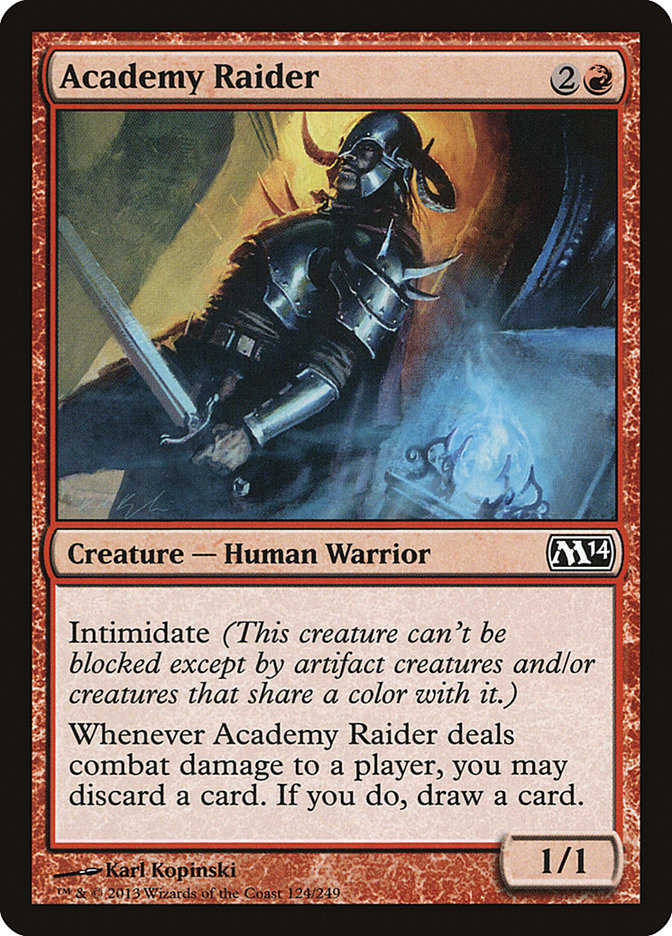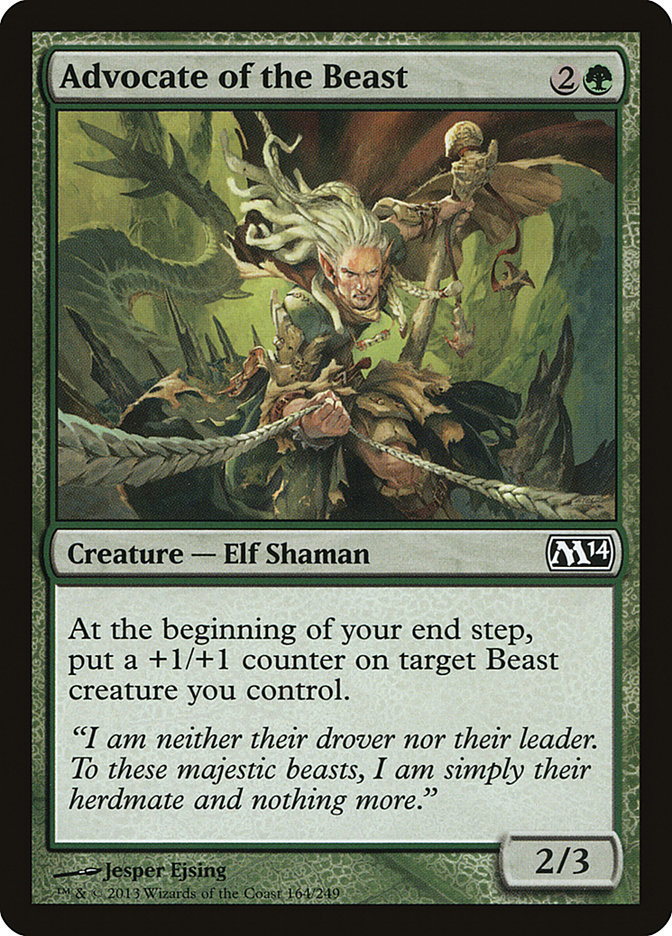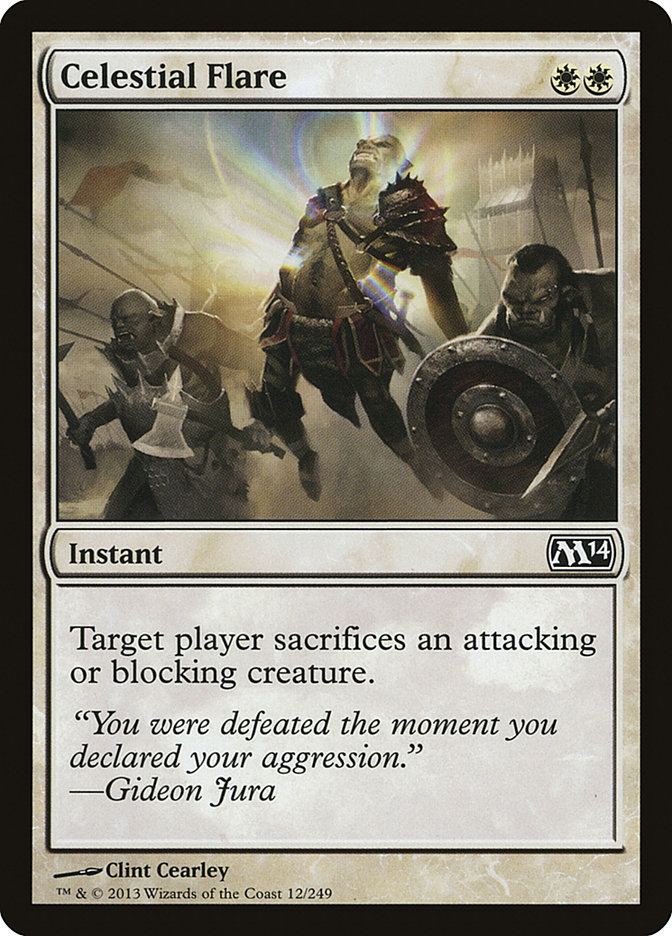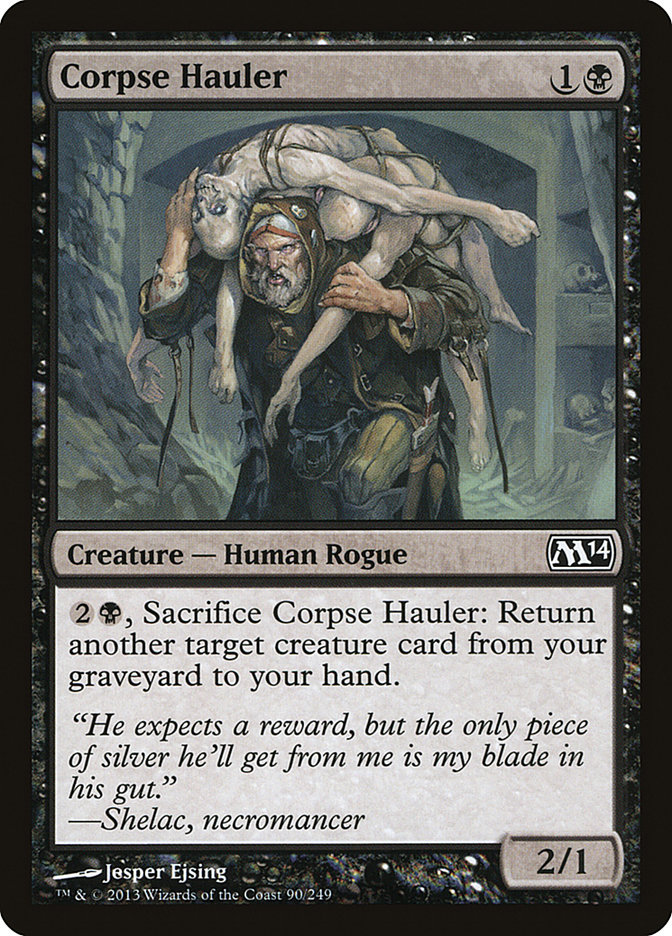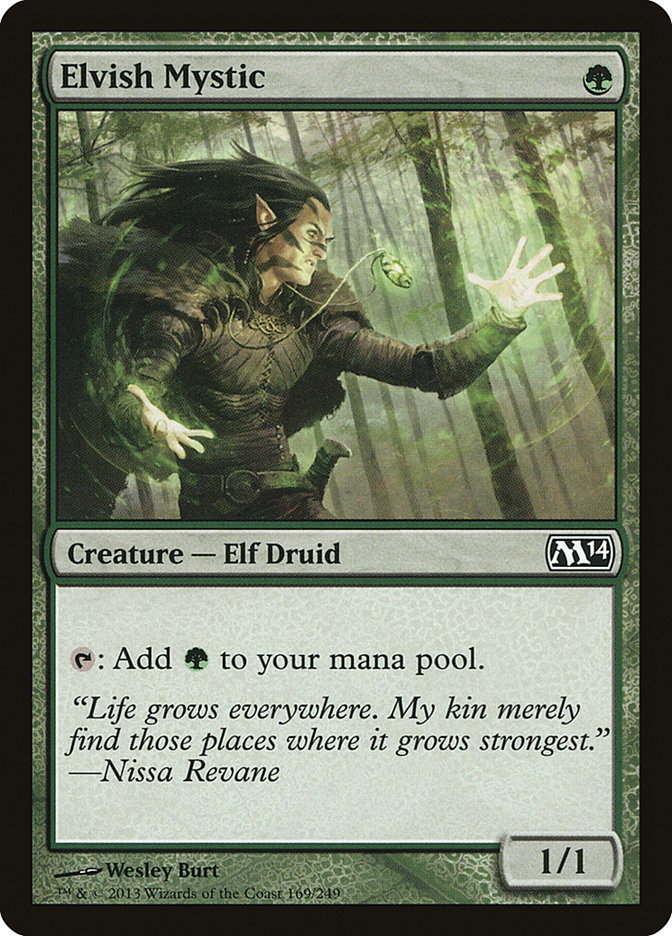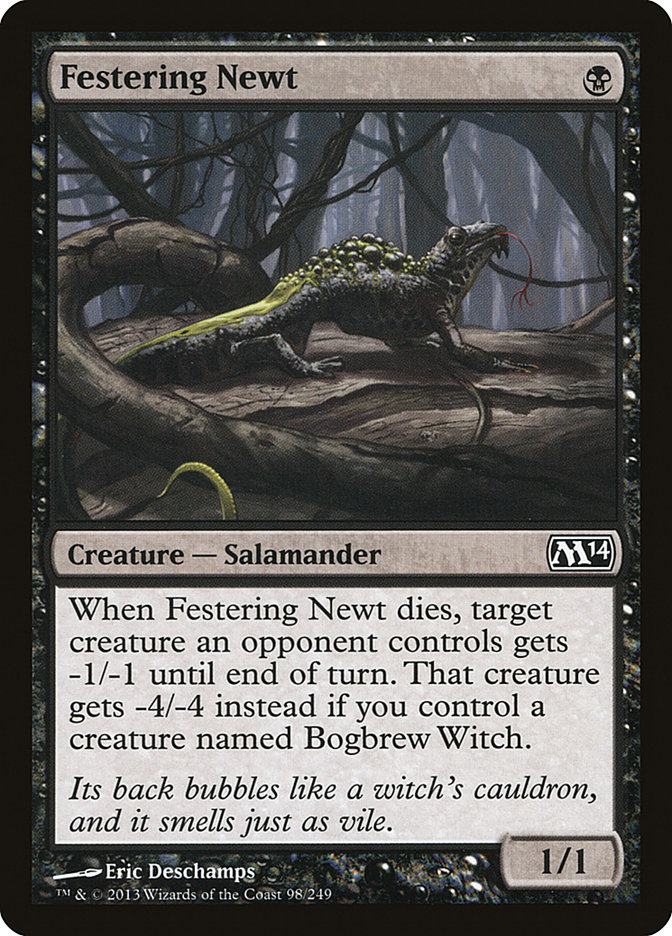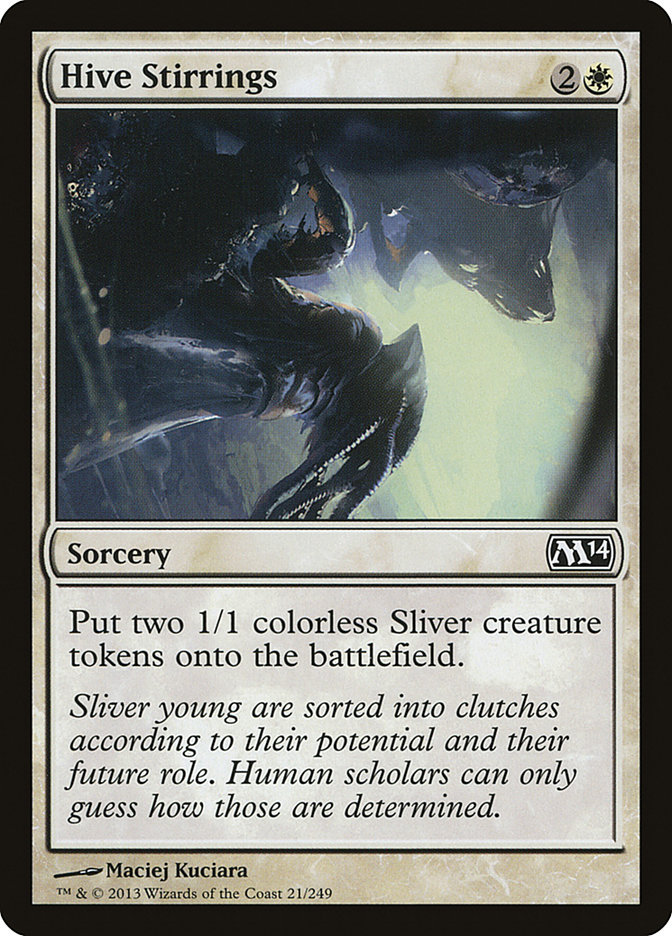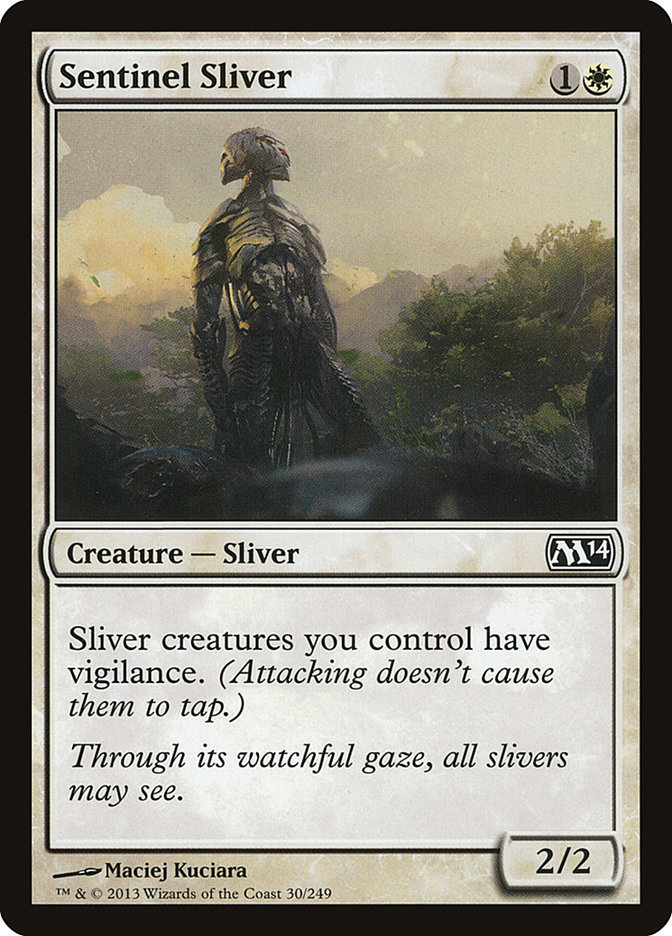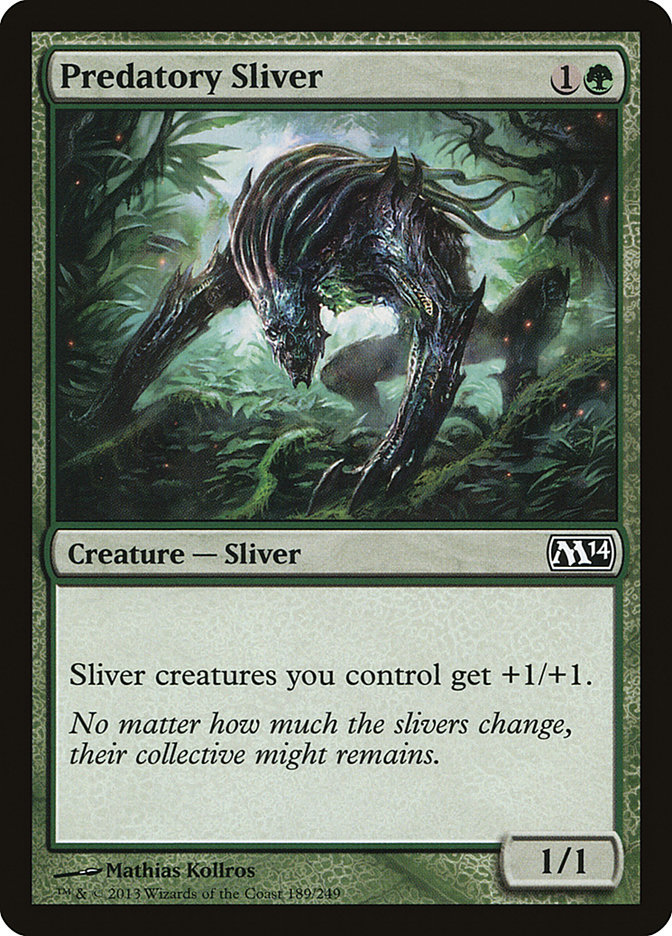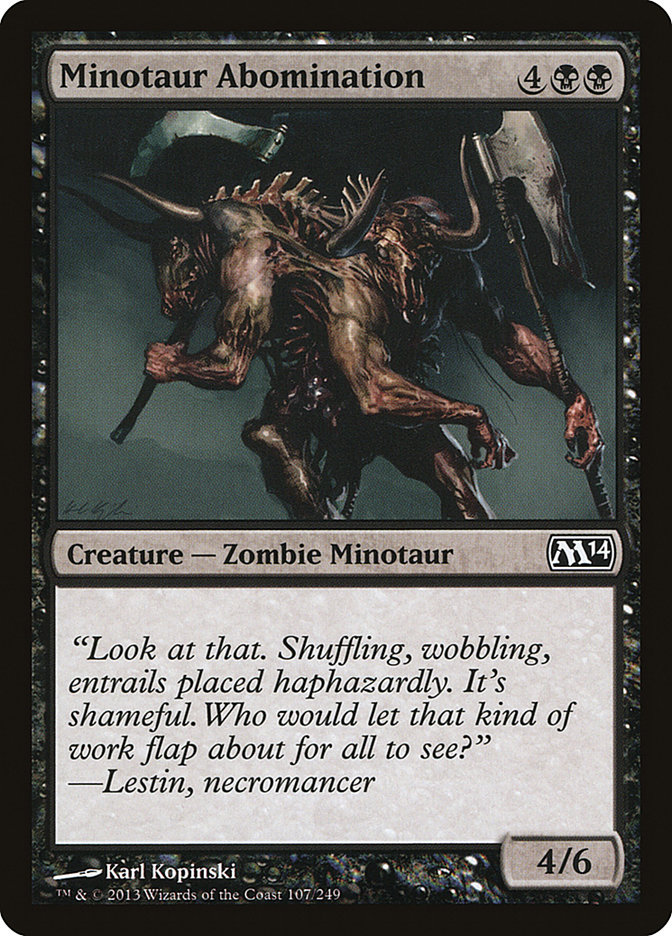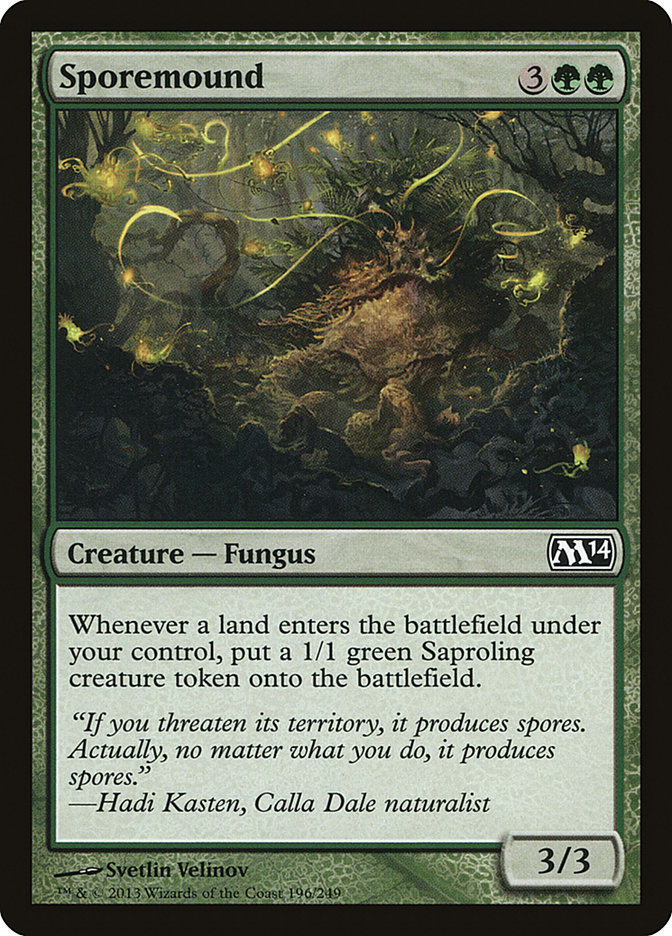By the time this article goes live, many of you will have had the chance to play with Magic 2014 at the Prerelease. Due to real life commitments, I will not be one of the Prereleasing masses, but that doesn’t mean I can’t opine on the commons of the set and their potential impact on Pauper (hint: Slivers).
Core sets are interesting releases for Pauper. They are rarely flashy and do not add any new mechanics by definition. Rather, these sets provide tools for existing archetypes, both top and fringe, helping to round out lists rather than upset the applecart. Last year, I highlighted thirteen cards. Of those, one saw serious play in a major deck: War Falcon in White Weenie. Two others were role players, from a format definer (Archaeomancer in Temporal Storm lists) to a deck that operates on its own axis (Bond Beetle as anti Diabolic Edict tech in Aura Aggro). This year’s core set crop is not as deep, but the bounty could be much greater (hint: Slivers).
How did I determine the order in which I’ll be examining the cards? This time, I’m using Gatherer, and the results are alphabetical. Without any further ado…
Academy Raider is quite the way to start a review. Gifted with red looting (rummaging? rooting?), this card seems rather pale in comparison to the actually more pale Looter il-Kor. It is harder to block (because red creatures are always turning sideways), but costing three is a pretty large impediment. At the same cost, blue gets Scroll Thief, which while lacking evasion is less prone to die to a weak gust of wind. That being said, Adam Styborski helped me understand why this creature is, at least in my eyes, nerfed.
After I suggested that the Raider could either cost one less or have an extra power, the Stybs reassured me that there was a reason for these seemingly paltry stats. Making this creature any better would likely push aggressive red decks a little more than R&D would want. Being able to dig for burn with a tough to block beater is quite potent. In that light, I can see why Academy Raider is closer to Academy Researchers than Academy Rector on the power scale.
Enough whining—what about the card?
Oh, that? Academy Raider is a sweet one without a home. The two best red decks at the moment are Goblins and Burn, neither of which can make use of a three-mana Human Warrior with one power. If this had been a Goblin, it would probably find a home there. The ability to dig for game-ending cards is incredibly valuable. Take this updated version of Red Deck Wins:
Creatures (21)
Spells (39)

In this build, Faithless Looting helps smooth draws and find game-ending spells. While Academy Raider is no Faithless Looting, it could find a home in a similar deck. Again, this is very likely to connect against decks that are not Affinity, Nivix Cyclops, or Goblins (provided you can protect it). The key will be to surround it with other more threatening cards. However, in those cases, the assured activation of Rummaging Goblin or Mad Prophet might be better. My initial verdict is that this card has so much potential but no home.
I was ready to write off Advocate of the Beast. I thought it cost 3G and felt that it was just terrible. Of course, it costs 2G, which for a 2/3 is much better. The incentive to run Advocate is, of course, to make Beasts bigger. But how many can come down before Advocate of the Beasts? Believe it or not, there at 16 Beasts that cost two mana or less in Pauper (although I doubt any mana base is going to stretch enough to cast Advocate and Cavern Harpy or Ceredon Yearling).
The more interesting cards are Garruk’s Companion, Slippery Boggle, Blind Creeper, Wretched Anurid, and, finally, Kiln Fiend. Starting at the end, Kiln Fiend is already a staple creature of the format. While the decks that utilize it are Izzet or Mono-Red, it isn’t too farfetched to imagine an all-in Gruul deck. With Kiln Fiend, pump spells, and Beasts like Slaughterhorn, Advocate of the Beast could find a spot as a way to develop a threat at zero additional mana cost.
The black Beasts are both aggressive creatures with drawbacks that matter. Temporal Storm combo decks cast multiple spells each turn while also Ghostly Flickering enough creatures into play to kill Blind Creeper and make you regret running Wretched Anurid.
Slippery Boggle is already making small waves as part of the Aura Aggro deck. It is not impossible to imagine a world where it is played alongside Garruk’s Companion and other Beasts in a tribe-influenced beatdown deck. There isn’t enough here just yet, but if there continues to be inexpensive creatures of the type, then Advocate of the Beasts could see play.
When I first gazed upon Celestial Flare, I was not blinded. Rather, I thought it was a pretty poor Diabolic Edict style effect. I felt that casting it in response to a solo Ulamog’s Crusher attack would cause some frowns after losing permanents to the annihilator trigger. Then I played against the Nivix Cyclops deck and realized that this card is a sweet bullet answer to that deck and its ilk. Being able to get around protection from Apostle’s Blessing or hexproof on a Gladecover Scout can be huge. While black has long cornered the market on sacrifice removal, it is nice to see white get a conditional version that plays into the color’s defensive nature.
Corpse Hauler is my favorite card from this set for Pauper. I was a huge fan of Pit Keeper when it came out in Time Spiral because it’s a Gravedigger that doesn’t need anything in the yard to be valuable— a two-power creature for two is just fine. Currently, such a card would be woefully outmatched in Pauper, but Corpse Hauler is something different.
On the first few turns of the game, it is a Krovikan Scoundrel. It can do all the wonderful things a two-power creature for two mana is capable of, like attacking for two or trading with other similarly-sized creatures. My guess is that you want to hold on to it for that really sweet sacrifice effect.
In the later turns, the Hauler acts as a very expensive Raise Dead that has the benefit of triggering morbid. But more than that, it acts as a Raise Dead that comes with a 2/1 early. It is almost as if this is a mediocre creature that says "when you’re ready, draw a Disentomb." While there might be some feel bad in running this out there just to draw removal, that isn’t the worst thing since that is one less removal spell aimed at whatever awesome creature you were going to get back anyway.
Corpse Hauler would fit very nicely into a Pauper Aristocrats list, especially one that utilizes Undying Evil. This is a list I have been tinkering with updated with Corpse Hauler:
Creatures (26)
- 4 Ravenous Rats
- 3 Carrion Feeder
- 4 Phyrexian Rager
- 2 Aven Riftwatcher
- 3 Kor Skyfisher
- 4 Fume Spitter
- 3 Doomed Traveler
- 3 Corpse Hauler
Lands (15)
Spells (19)

Do we really need Elvish Mystic? I understand from a flavor perspective, but in Pauper I’m not sure the Elves decks need more mana generators. If they needed them that badly, there are (bad) options out there (a la Boreal Druid). I see these decks sticking with a similar number of one-cost mana dorks but split in a 3-3-2 amongst Elvish Mystic, Fyndhorn Elves, and ancestor awesome Llanowar Elves to help avoid potential Echoing Decay blowouts.
Uncle Fester (aka Festering Goblin) has a pet! Festering Newt is just plain better (tribe aside) than Festering Goblin since it cannot hit your own creatures. While Fume Spitter often gets the nod since the counter is permanent and is on demand, the ability for your one-drop to trade with their two-drop can be quite useful in a format where two toughness is the norm. If a sacrifice-heavy Aristocrats-style deck becomes popular (a man can dream), Festering Newt is a much better option than Festering Goblin.
Okay, so here we are. We finally reached a Sliver card worth discussing. Rather than splitting it up, I am going to be discussing Hive Stirrings, Sentinel Sliver, and Predatory Sliver in one section. Slivers were once a viable deck in Pauper. In the earliest days of sanctioned events, decks packing the full complement of Muscle Sliver and Sinew Sliver were frequent sights. Slivers is similar to Affinity in that most of the permanents you play have positive synergy with those you already control.
Predatory Sliver adds a third lord to this army, which is enough to push it firmly back into the conversation. Sentinel Sliver gets some mention because it is a natural 2/2. Back in the day, Spinneret Sliver was often the 2/2 of choice, but a split between these two is not out of the realm of possibility. While Spinneret has utility against the flying army put forth by blue, vigilance is just generally a more useful ability against decks like Stompy and Affinity. The real gem is Hive Stirrings, as this is in-color card advantage. Sure, paying three for two 1/1s seems bad, but let’s face it: most of the time this will put four power on the table thanks to one of three lords. Following that up with a turn 4 +1/+1 Sliver (or two, gross) means the enemy will be facing down quite a bit of offense.
Here is a rough sketch of what I imagine early Sliver lists will look like:
Creatures (32)
- 4 Muscle Sliver
- 4 Metallic Sliver
- 4 Plated Sliver
- 4 Sidewinder Sliver
- 2 Spinneret Sliver
- 4 Sinew Sliver
- 4 Virulent Sliver
- 2 Sentinel Sliver
- 4 Predatory Sliver
Lands (2)
Spells (26)

What can keep this deck in deck? In my mind, there are two items that will prevent Slivers from taking over. First is mana. Two-color decks are at a disadvantage in Pauper due to the lack of good duals. The Gates are strong in the right deck and are a definite step up from four years ago, so that might not be the biggest issue. But the same card that kept Slivers in check before is still around: Crypt Rats. In the early days, a well-timed Crypt Rats could wreck a horde. Now, this is a much tougher prospect thanks to the addition of Predatory Slivers. If you are going to play Pauper after the release of M14, all I can say is be prepared for Slivers.
I want to take the time to call out Minotaur Abomination. I love this card. When I saw it, I realized it was two Hurloon Minotaurs stapled together. For someone who has been playing the game as long as I have, this is a nice nod without being as insular as some of the jokes in Time Spiral. Of course, then I scrolled down the spoiler and saw that this is actually two Undead Minotaurs sewn together, right down to mana cost, and I thought, "Good job R&D." It is subtle things like this that make Magic a game of discovery on so many levels.
Green ramp decks don’t really exist outside of Cloudpost decks. The reason is that there is not enough to do with late-game Rampant Growths. Sporemound helps solve that problem by turning each late-game land drop and ramp spell into a 1/1 token as well. While this is not enough on its own, when combined with potential ramp beater Battlewand Oak, it becomes feasible that non-Cloudpost Green ramp decks will exist.
So there you have it. M14 is not the deepest set for Pauper, yet it looks to help bolster a former key player back to the top tables. Here’s my list of cards to acquire from M14:
4 Academy Raider
4 Corpse Hauler
4 Elvish Mystic
4 Festering Newt
4 Hive Stirrings
4 Predatory Sliver
4 Sentinel Sliver
4 Sporemound
Keep slingin’ commons-
-Alex
SpikeBoyM on Magic Online
The Colors of Pauper: W U B R G
Discuss Pauper on Twitter using #MTGPauper

